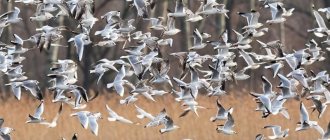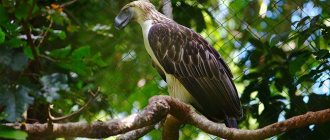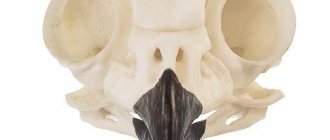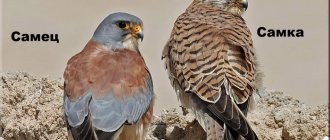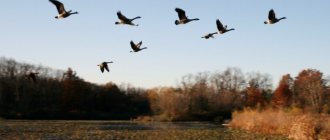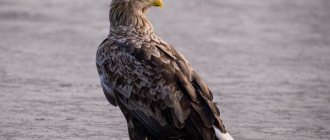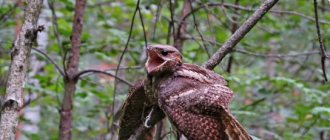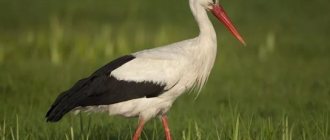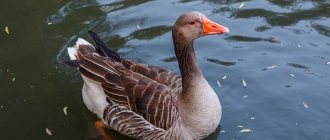Birds are the most mobile creatures living on earth. Thanks to the presence of wings, they can easily migrate over long distances due to changing weather conditions or environmental deterioration. Based on their ability to fly, birds are divided into two large groups:
- wintering:
- sedentary (never leave their inhabited territory);
- nomadic (constantly on the move: moving from place to place, wanting to get food);
- migratory (perform constant movements depending on the time of year).
Description of the owl
Owls are one of the most ancient birds on our planet. According to ornithologists, owls lived in North America several tens of millions of years ago. owl-like bird is believed to have lived during the Mesozoic period, approximately 250 million years BC.
Although they are birds of prey, they have little in common with daytime raptors. In the legends of the Middle Ages, owls appear as mystical characters who see the past, future and present; in those days people were afraid of them and avoided them.
In the perception of modern man, the owl is the wisest bird in the world . These birds are mentioned in the Bible in the prophecies of Isaiah, and on Babylonian bas-reliefs the goddess Ishtar is depicted accompanied by two owls.
The owl is considered the oldest bird on the planet
Despite their predatory nature, in nature these birds play a very important role, preventing the population of mice and other rodents from growing, causing damage to agriculture and forestry.
Benefits for the environment
It is a known fact that representatives of the owl order in certain situations are considered natural regulators of population numbers in some areas.
For example, the polar owl plays an important role in maintaining the harmony of the biosphere in the tundra.
The presence of a polar owl in the territory where ducks, geese, waders and geese nest will provide protection for the clutches from small predators that regularly encroach on them. The owl will not touch other birds, but will successfully drive away arctic foxes and other small predators that are capable of ruining the nest.
Features and habitat of the owl
Owls live almost everywhere except Antarctica. They are found in deserts, steppes, high in the mountains, on the sea coast, in forests, villages and even in large cities.
They usually avoid open areas, except for some species, such as short-eared owls . Part of the population of these birds leads a sedentary lifestyle, some regularly fly from place to place.
Listen to the voice of a short-eared owl
They most often nest in secluded places, for example in rock crevices, the hollow of an old tree or in the attic under the roof of a house.
Pictured is a short-eared owl
The sizes of owls vary over a fairly wide range. The smallest representatives, pygmy owls, reach a height of no more than 20 cm, and their weight does not exceed 100 grams.
Listen to the voice of a pygmy owl
The largest owl is the Eagle Owl , its weight can reach up to 4 kg and height up to 75 cm.
The bird's body is strewn with thick feathers, under which there is a large amount of fluff. Coloration also varies depending on the species, and today there are 420 of them known.
Eagle owl bird
Color often depends on the habitat, adapting, for example, to the characteristics of tree bark and acting as camouflage. In order to be convinced of the amazing variety of colors of these birds, you can look at the photo of the owl bird .
Owls have very sinewy and strong legs. The bird captures its victims with its claws. The eyes are very large and have a penetrating gaze. Thanks to this feature, since Ancient Greek times it has been believed that the owl is a wise bird .
The special structure of the eyes allows owls to perceive a stream of light of reduced intensity, which explains the fact that in the dark they see no worse than in daylight. The only drawback of owl vision is that they practically do not notice anything around them.
Interesting! The owl has 3 pairs of eyelids: one for blinking, the second for sleeping, and the third for keeping the eyes clean and protected.
The hearing of these birds is developed approximately 50 times better than that of humans, and the ears have different positions relative to each other, which in turn allows them to detect the location and track the further movement of prey.
The structure of the owl's beak is similar to the beak of parrots, and it is not for nothing that they are one of the closest relatives. The neck of birds is unusually mobile and allows them to rotate their heads 270 degrees.
Character and lifestyle of an owl
to unequivocally answer the question whether an owl is a migratory bird or not ; generally, birds of the order of owls prefer a sedentary lifestyle and live in pairs. The main peak of their activity occurs at night; during the day they sit in their nests or on tree branches.
The only exceptions are snowy owls, which are active almost around the clock during the polar day. A male and female owl form a pair and spend their entire lives in a single marriage; they actually do not have the courtship period inherent in many other birds.
White Owl
Owls are not particularly fond of building nests and can take someone else's or simply lay eggs in a small depression in the ground. They usually have from 4 to 10 eggs at a time. Hatched chicks, if there is a lack of food, can eat each other.
They spend about a month in the parent's nest, after which they fall out and begin an independent life, or they themselves go to feed someone, for example, their sworn enemies - daytime predators, such as golden eagles, eagles and hawks.
In general owls are nocturnal birds ; during the day they can fly from place to place only if someone disturbed them or they were attacked by daytime predators, otherwise they will hide in the crowns of trees, occasionally making hooting sounds to to outline the boundaries of their territory or to attract females, which, by the way, are somewhat larger than males.
Why do they come back
There is no clear answer to the question of what prompts birds to leave warm places rich in food and return, covering vast distances to abandoned nests. Scientists have put forward several hypotheses .
- Long daylight hours cause discomfort to the bird, so it tends to a place with its usual regime.
- In hot countries, despite the abundance of food, conditions are not ideal: due to the warm climate and humidity, birds are attacked by parasites.
- In the tropics, it is difficult for birds of mid-latitudes to find a place to nest and raise their chicks.
Owl feeding
Absolutely all species of owls feed exclusively on animal foods, such as worms, large insects, snakes and lizards. Some species feed on fish caught in shallow waters, but the bulk of the owl population prefers small rodents, birds and sometimes bats.
The largest eagle owls hunt hedgehogs, partridges, pheasants, black grouse and even birds of prey. Owls do not feed on carrion. In winter, they can store supplies directly in their nests.
Sometimes several dozen frozen field mice accumulate there. Owls can go without water for up to several months. The required level of fluid is provided to them by blood from the caught prey. The owl hunts and, accordingly, feeds in the dark.
Where does it live?
You can meet the wading bird on absolutely all continents of the globe, from semi-desert to tundra. The only areas where the owl was not found were Antarctica and Australia.
This type of owl prefers to nest in fields and meadows, but only those where there are wetlands. Their nests are located on the ground or last year's grass, which has dried out. It is precisely these conditions that enable them to camouflage eggs and chicks.
Owl breeding
The behavior of male and female owls varies depending on the species. There are species that, having formed a pair once, spend their entire lives together; the males of some species, on the contrary, annually look for new females.
Owls breed approximately once a year. The female incubates the egg for about a month, and the male provides her with food during this period. Often, due to the uneven distribution of food, some chicks are much behind others in growth, and in times of hunger can easily be eaten by stronger ones.
Owl eggs are different from the eggs of most birds: they are exclusively white and spherical in shape. Owl chicks are born helpless, their eyes blocked with fluff. Both parents feed them.
To the question “ What is the life expectancy of an owl bird ?” It is also difficult to give a definite answer: the life expectancy of most individuals ranges from five to ten years, but there are cases when owls kept in zoo conditions lived up to forty and even fifty years.
The photo shows an owl's nest
The main reason why owls die is lack of nutrition. In years when the number of rodents is small, about a quarter of the young offspring die. Owls are also often attacked by other predators - hawks, golden eagles and others. Even some small species of birds can attack owls sitting in trees during daylight hours.
Birds owl species
At this point in time, scientists have counted approximately 420 species of owls. In general , the owl is a bird of the forest, but it can also settle not far from humans; its favorite places are attics and roofs.
polar owl
The snowy owl, on the contrary, avoids people and lives mainly in northern latitudes, where population is lowest. The largest species is the eagle owl, and the smallest is the pygmy owl.
buy an owl bird at a pet store or on specialized message boards on the Internet, but you should understand that it is a predator and it feeds exclusively on animal food.
Keeping at home
You can have an owl as a pet if you are willing to provide the bird with its vital needs. A night hunter will want activity from evening to morning, so the bird will not let its owner sleep.
To feed, owls need whole carcasses of rodents or birds; meat just won’t do. Not every owner will be internally prepared for this. Birds need enough space to not sit in a cage, spread their wings, and sometimes fly. Eagle owls, tawny owls and other large birds are not suitable for keeping in an apartment.
The owl in the photo always attracts attention with its attentive gaze. Owners of tame birds note their intelligence, playfulness, vitality, and curiosity. You should only buy an owlet from a nursery, since the markets often sell individuals caught by poachers.
Wild birds are often unhealthy, so you can bring the infection into the house and be left without a pet. Diseases in birds develop rapidly. Only a competent approach and sincere care will ensure the health and well-being of the owlet.
